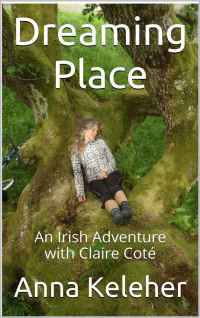Animals Dreaming 2

Remember this lovely springer spaniel from the beginning of our journey? It turns out that scientists agree with us that non-human dreamers, like this lovely 4-legged, have a rich dream life.
This topic often captures our attention and has appeared in several previous posts such as here and here.
You can listen to some of our musings about animals dreaming at these previous posts, Fisherfolk Dreaming and Dream Food Vision.

So, according to scientists (as represented on Wikipedia’s dream page), “Sleeping and dreaming are intertwined….REM sleep and the ability to dream seem to be embedded in the biology of many organisms that live on Earth. All mammals experience REM. The range of REM can be seen across species: dolphins experience minimum REM, while humans remain in the middle and the opossum and the armadillo are among the most prolific dreamers.”
Apparently there have been studies that have “observed dreaming in monkeys, dogs, cats, rats, elephants and shrews [and] ….There have also been signs of dreaming in certain birds and reptiles.
Here is another interesting twist offered on Wikipedia:
In 1954 the theta rhythm was discovered by two scientists at the University of California at Los Angeles when experimenting with rabbits, shrews, moles and rats. The theta rhythm is the oscillatory pattern of electric activity in the brain. [Interesting discovery, but the idea of experimenting on animals makes me cringe!] This discovery lead to a commentary published in 1972 that explained differences in Theta Rhythm where defined by respective animal behaviors. Awake animals showed high Theta Rhythm when behaving in ways that where crucial to their survival, for example: eating and reproducing. This apparently was a response to a changing environment. The theta rhythm occurs during REM and studies suggest it “reflected a neural process whereby information that is essential to the survival of the species” is gathered throughout the day and is “reprocessed into memory during REM sleep”. In conclusion: “dreams may reflect a memory-processing mechanism inherited from lower species”.
Some scientists argue that humans dream for the same reason other mammals do. From a Darwinian perspective dreams would have to fulfill some kind of biological requirement or provide some benefit for natural selection to take place. Antti Revonsuo, a professor at the University of Turku in Finland, claims that centuries ago dreams would prepare humans for recognizing and avoiding danger by presenting a simulation of threatening events. This threat-simulation theory was presented in 2000.
This makes sense in a way, as we humans are in fact mammals. But how, I wonder, does this theory fit into modern human dreaming patterns? If dreams served to prepare us for danger in the past, what purposes do they serve now?
If you would prefer a religious/spiritual perspective over science, here is another take:
“God sleeps in stone, breathes in plants, dreams in animals, and awakens in man”
– Hindu Proverb
















